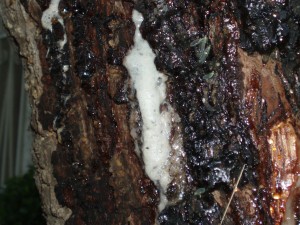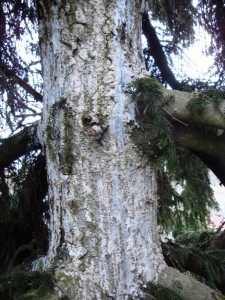
Diagnosis is an essential first step when evaluating a valuable tree of any kind. It begins with the overall assessment of the site and the tree and the identification of areas of concern. These could be anything from insect or disease pests, or abiotic (non-living) sources of stress. If signs of pest damage are evident, we first identify the pest, and then we assess the extent of damage.We give a prognosis for the future spread of the pest problem, and we specify treatments to combat the pest.
Why should a tree be diagnosed?

If you have a large tree of value, taking an inventory of its conditions will give you an idea of the its value and any potential liabilities. Houses are inspected every time they change hands, and roads and bridges are checked periodically. Inspecting valuable trees once in a while allows problems to be literally nipped in the bud, saving money and trees.
After assessing the tree’s condition and diagnosing any problems, we look at possible ways to mitigate or improve conditions. Given these possibilities, the owner can decide which treatment to go ahead with. We use the same process for the assessment of a tree’s structure and risk.